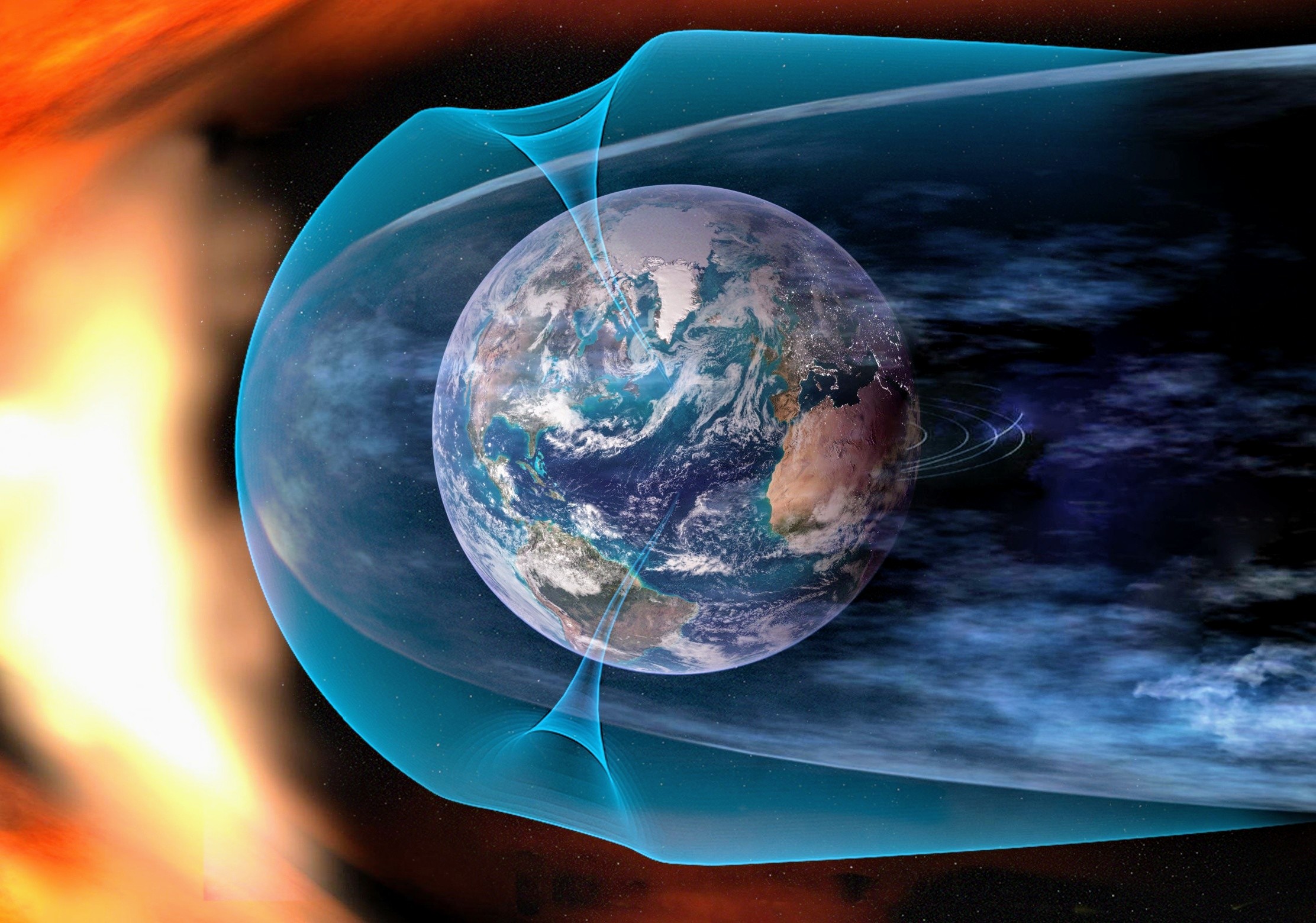Earth is unusually lucky: its global magnetic field deflects harmful charged particles from the Sun and deep space, shielding the atmosphere and life at the surface.
By contrast, cosmic radiation constantly batters worlds like Mars, which lack a comparable shield.
For decades, geophysicists have explained Earth’s magnetism with the dynamo theory. As the planet slowly cools, molten iron-nickel in the outer core circulates in vast convection currents.
Earth’s rotation twists these flows into helical, screw-like patterns. Moving metal generates electric currents, and those currents, in turn, generate the magnetic field.
There has been a nagging problem, though. Early in Earth’s history, before the inner core crystallized (roughly a billion years ago), the core was entirely liquid. Could the geodynamo have operated back then without the extra energy sources and structure provided by a solid inner core?
Magnetism without a solid core
A team of three geophysicists from ETH Zurich and the Southern University of Science and Technology (SUSTech) in China, built a new computer model of the core that shows a completely liquid core could have generated a stable magnetic field in much the same way it does today.
To get there, the researchers tackled a long-standing modeling hurdle: the influence of viscosity – the internal “thickness” or resistance to flow – on the simulated core.
In the real core, viscosity is believed to be extremely small. Yet most numerical models must exaggerate it for computational stability, potentially skewing the physics.
Using high-performance computing (including runs on the Piz Daint supercomputer at the Swiss National Supercomputing Center in Lugano), the team simulated the correct physical regime where viscosity becomes negligible for the dynamo.
The result: a robust, self-sustaining magnetic field can emerge even when the core is fully molten. “Until now, no one has ever managed to perform such calculations under these correct physical conditions,” said lead author Yufeng Lin.
Magnetic field, no inner core
In the model, the same core ingredients that drive today’s dynamo – buoyancy-driven convection and the twisting effect of rotation – were sufficient to organize flows and magnetic fields even in the absence of a solid inner core.
By minimizing viscosity to effectively “get out of the way” of the physics, the team reproduced a realistic dynamo regime. In this regime, microscopic fluid resistance doesn’t control the outcome – large-scale convection and rotation do the heavy lifting.
That means the early Earth could plausibly have sustained a magnetic shield long before inner-core growth added extra energy from crystallization.
This advances a key idea: the geodynamo is surprisingly resilient. A solid core isn’t required – just the right heat loss, composition, and rotation to drive and organize metal flows.
Rethinking early Earth’s defenses
“This finding helps us to better understand the history of the Earth’s magnetic field and is useful in interpreting data from the geological past,” said co-author Andy Jackson, a professor of geophysics at ETH Zurich.
If magnetism arose with a liquid core, Earth’s protective shield may have formed earlier and lasted longer than thought. That, in turn, reframes how we think about early habitability.
A magnetic umbrella blocking high-energy radiation would have helped preserve the atmosphere and supported the conditions under which life could emerge and evolve.
Because the approach captures the essential physics of a low-viscosity dynamo, it could help scientists probe magnetic fields elsewhere. These include the Sun’s sprawling magnetism and the intense fields of Jupiter and Saturn.
Lower-viscosity models let scientists test how composition, rotation, and cooling shape magnetism across the solar system.
Magnetism protects technology
Modern civilization quietly depends on Earth’s magnetic field. It safeguards satellites and power grids from space weather, stabilizes navigation, and underpins countless technologies.
“It is therefore important to understand how the magnetic field is generated, how it changes over time, and what mechanisms maintain it,” Jackson noted. “If we understand how the magnetic field is generated, we can predict its future development.”
Earth’s field has flipped polarity thousands of times, and in recent decades the magnetic north pole has migrated rapidly toward geographic north. Understanding the dynamo’s resilience helps scientists predict future magnetic shifts, from gradual drifts to full reversals.
A tougher shield than expected
By refining core simulations, scientists show Earth’s magnetic shield could ignite without a solid inner core. A fully molten, vigorously convecting, rapidly rotating core would have done the job.
That insight tightens our picture of early Earth, strengthens links between biodiversity and a protective magnetosphere, and equips researchers to explore magnetic lifecycles on other worlds.
It also offers a firmer foundation for anticipating how our planet’s magnetic shield might evolve in the centuries to come.
The study is published in the journal Nature.
—–
Like what you read? Subscribe to our newsletter for engaging articles, exclusive content, and the latest updates.
Check us out on EarthSnap, a free app brought to you by Eric Ralls and Earth.com.
—–
